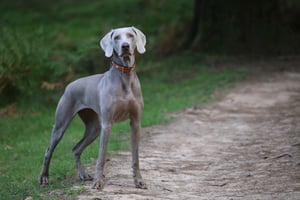Are you looking for the most effective way to train your canine dog? Do you want to learn the best...
The Ultimate Guide to Brussels Griffon Training
Training a Brussels Griffon can be a rewarding experience, but it is also a challenging one. This guide provides detailed information on the best techniques to use in Brussels Griffon training, from housebreaking to teaching commands. It also provides valuable tips on how to make the training process smoother and more successful, as well as advice on common problems that may arise. We cover everything you need to know about Brussels Griffon training and more!
Understanding the Basics of Brussels Griffon Training
Before you begin Brussels Griffon training, it is important to understand the basics of dog training. The two main principles of all dog training are positive reinforcement and consistency. Positive reinforcement means rewarding your dog for good behaviour, while consistency means applying the same rules and expectations every time. It is also important to establish yourself as the leader of the pack and to use praise and rewards to reinforce good behaviour.
It is also important to remember that Brussels Griffon puppies are highly intelligent and eager to please. This makes them very easy to train, but it also means that they can quickly become bored. To keep their attention, try to keep training sessions short and interesting, and make sure to provide plenty of rewards for good behaviour.
When it comes to Brussels Griffon training, it is important to be patient and consistent. Dogs learn best through repetition, so it is important to give your dog plenty of practice and reward them for good behaviour.
Housebreaking a Brussels Griffon
Housebreaking a Brussels Griffon is one of the most important steps in Brussels Griffon training. To housebreak your dog, start by establishing a routine. Set regular times for your dog to go outside and make sure they are taken out after meals and naps. It is also important to watch for signs that your dog needs to go out, such as sniffing and circling.
When your dog goes outside, make sure to praise them for going in the right spot. You can also use treats as a reward. If your dog has an accident inside, do not scold them. Instead, clean it up and take them outside immediately. With consistency and patience, your dog should be housebroken in no time.
Teaching Basic Commands
Once your Brussels Griffon is housebroken, you can begin teaching them basic commands. The most common commands are “sit”, “stay”, “come”, and “down”. Start by teaching your dog the “sit” command. To do this, hold a treat in front of your dog’s nose and say “sit”. Once they sit, give them the treat and praise them.
Repeat this process several times until your dog understands the command. Then, start adding a hand signal. Hold your hand in the same position as when you said “sit” and give the treat and praise when your dog follows the command. Once your dog understands the command, start using the hand signal without saying “sit”.
Continue this process with the other commands until your dog understands them all. Be sure to use positive reinforcement and consistency when teaching commands, as this will make the training process smoother and more successful.
Common Problems in Brussels Griffon Training
When training a Brussels Griffon, it is important to be aware of common problems that may arise. The most common issues include:
- Chewing: Brussels Griffons are known for their love of chewing, so it is important to provide them with plenty of chew toys and to discourage them from chewing on furniture and other items.
- Barking: Brussels Griffons are also known for their barking, so it is important to discourage excessive barking with positive reinforcement.
- Digging: Brussels Griffons love to dig, so it is important to provide them with a designated area where they can dig without causing damage.
- Jumping: Brussels Griffons can be prone to jumping, so it is important to discourage this behaviour with positive reinforcement.
Tips for Successful Brussels Griffon Training
Here are some tips to help make the Brussels Griffon training process smoother and more successful:
- Be patient: Training a Brussels Griffon can take time, so be patient and don’t expect results overnight.
- Be consistent: Dogs learn best through repetition, so it is important to be consistent with your rules and expectations.
- Be positive: Positive reinforcement is the most effective way to train a dog, so make sure to reward your dog for good behaviour.
- Be firm: It is important to be firm with your dog, but also to be fair and consistent.
Conclusion
Training a Brussels Griffon can be a rewarding experience, but it is also a challenging one. It is important to be patient, consistent, and positive when training your dog. It is also important to be aware of common problems that may arise and to use positive reinforcement and consistency to encourage good behaviour. With the right approach, you can successfully train your Brussels Griffon and enjoy a lifetime of companionship.



